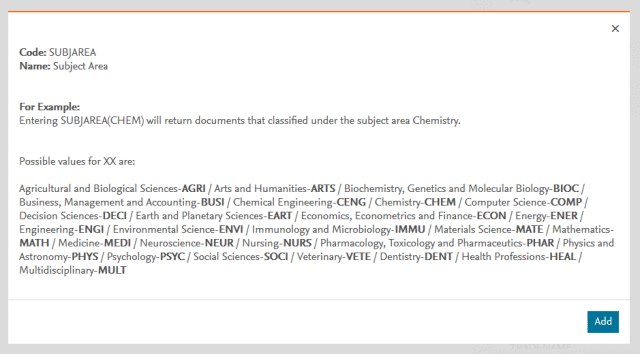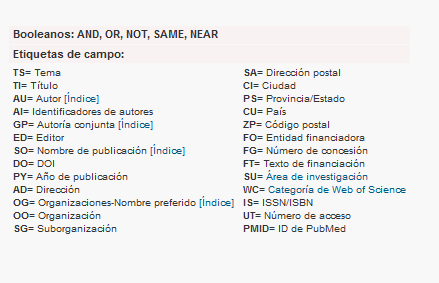Author: Ángel Torres – Translation: Erika-Lucia Gonzalez-Carrion
Scopus® and Web of Science® are intranets of payment oriented to scientific searches that allow to support investigations through bibliographical sources of quality and with high level of cites, as it allows to recognize, limit and refine the search to those scientific journals that incorporate similar studies. The institutions of Higher Education, especially the universities contract collective subscriptions of these services benefiting the revision of documents of quality, exceeding the typical search on Google Scholar, by containing multiple files of refining as theme, topic, tittle, authors, name of the publication, DOI, language, type of document, ISSN, key words, summary, among others.
The search system of Scopus® is classified in 27 main thematic areas and 313 specific categories, among which outstand the medicine area with 48 and social sciences with 23 specific categories. Within the advanced search the investigator could opt for three alternatives, using the field code “SUBJAREA”, where there are represented the 27 main thematic areas:

On the first alternative it is added simply the abbreviation of the thematic, while, on the second, the main thematic areas could be combined with the Boolean operators: or (o), and (y), and not (y no), pre/ (presided by), w/ (inside). Example: SUBJAREA (ECON) AND SUBJAREA(ENER), it is ordered the search of publication oriented to economy and energy. The third alternative is applied when the sample is too wide refining with other descriptors as number of affiliation (AF-ID), city or country of affiliation (AFFILCITY o AFFILCOUNTRY), type of document (DOCTYPE), web site (WEBSITE), tittle (REFTITLE), authors (AUTH), DOI, language (LANGUAGE), ISSN, key words (KEY), summary (ABS), etc.
For its part, Web of Science® maintains 5 main thematic areas: sciences of life and biomedicine; physical sciences, technology, arts and humanity; and social sciences, from which arise 151 categories, where it predominates sciences of life and biomedicine with 75 categories.
In order to acced to the specific search within this database, it is used similarly the part “advanced search”, where unlike Scopus®, it could be selected both the thematic through the label SU=, as the categories of each one using WC=. Likewise, it could be accompanied of Boolean operators that in this case could be: and (y), or (o), not (no), same (igual) and near (cerca). It is important to remark that in Web of Science® the label of the theme (TS=) does not include predetermined values as the thematic and the categories, thats is to say, the researcher has freedom of incorporating the specificity of its study, example: TS= Media literacy AND SU=Social Sciences AND WC=Education & Educational Research.

Anyway, all researchers should have well defined the area and the categories of his or her studies, taking into account other descriptors that refine their study with the object of getting to know the new trends and generating new contributions to the scientific knowledge.
